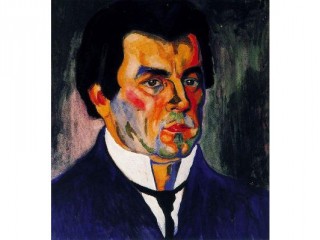
Kasimir Malevich biography
Date of birth : 1878-02-11
Date of death : 1935-05-15
Birthplace : Kiev, Russia
Nationality : Russian
Category : Arts and Entertainment
Last modified : 2011-08-31
Credited as : Artist painter, suprematism, geometric pictures
The Russian painter Kasimir Malevich founded suprematism and is credited with having painted the first geometric, totally nonrepresentational picture.
The son of a foreman in a sugar factory, Kasimir Malevich was born on Feb. 11, 1878, in Kiev. He received only a rudimentary formal education, but through his own energies he was well read. Even so, his writings reveal his lack of schooling. They are often disorganized and their ideas are crudely expressed, especially when they are compared with the essays of Wassily Kandinsky, whose concepts parallel Malevich's.
In 1895 Malevich became a student at the Kiev School of Art. He settled in Moscow in 1904, and 5 years later he had his first one-man show. He had been painting in the impressionist style, but his work by 1909 suggests a strong dependence on contemporary French art for direction, notably that of the post-impressionists, the Fauves, and the Nabis, whose paintings he had seen in the remarkable collections of Ivan Morosov and Sergei Shchukin (Stchoukine). Malevich became acquainted with Michael Larionov and Nathalie Gontcharova in Moscow and assumed an active role in the exhibitions of the Jack of Diamonds group.
By 1911 Malevich was working in a cubist manner that was closer to Fernand Leger in style than to Pablo Picasso and Georges Braque. An example of Malevich's cubist period is Morning in the Country after the Rain (1911). In it he abstracted a landscape in which cylindrical figures of peasants are featured prominently. He had dealt with similar themes the year before, but more graphically. By 1913 he had so transformed his material that recognizable imagery had disappeared, though inferences of light, bulk, and atmosphere had not. Later that year he carried abstraction to its ultimate limit: he painted a black rectangle on a white ground. This, the first suprematist work, according to the artist, expressed "the supremacy of pure feeling in creative art."
Thereafter Malevich confined himself to arrangements of geometric shapes with the goal of suggesting such sensations to the beholder as flight, wireless telegraphy, and magnetic attraction. In 1918 he painted a series of white-on-white suprematist compositions. The following year he had a retrospective exhibition in Moscow and also took over the directorship of the School of Art in Vitebsk, which he renamed the College of New Art. He spent more and more time teaching and writing. In 1922 he moved to Leningrad, where he was provided with a studio and living quarters in the newly reorganized Museum of Artistic Culture.
In the 1920s Malevich made several sculptures which look like models of modern buildings. These he called "arkhitectonics." In the early 1920s the Soviet government began to assume a negative attitude toward abstract art, since it was ineffectual as a tool for propaganda, and started to support "socialist realism." Despite this, Malevich was permitted to go to Germany in 1927 to exhibit his work and to lecture at the Bauhaus. One of his books, The Nonobjective World (written in 1915), was published in German by the Bauhaus that year.
In 1929 Malevich had a retrospective exhibition at the Tretyakov Gallery in Moscow. During the last years of his life he painted fewer pictures, and those he did were portraits, mostly of his family and friends. He died of cancer in Leningrad and was buried in a coffin that he himself had decorated with suprematist motifs.



















